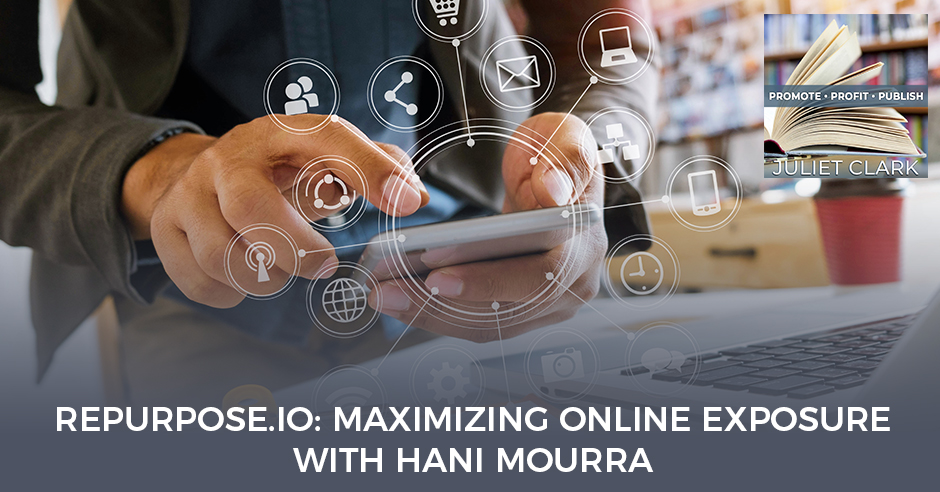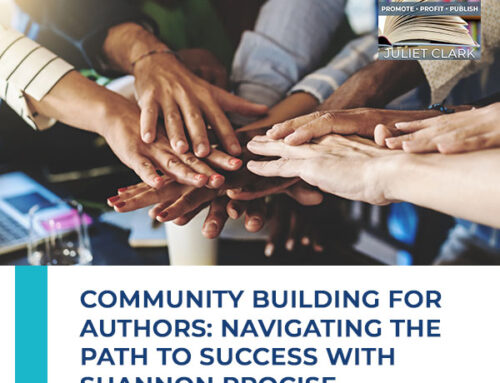
In this day and age, you have to be everywhere to get noticed. For businesses and individuals, that means having to utilize multiple online platforms that extend your reach farther. However, this can not only be costly but time-consuming as well. This episode’s guest has created the perfect software that can help you with your exposure woes. Hani Mourra is a dad, a software-preneur, and the creator of Repurpose.io—an easy to use automation tool that helps entrepreneurs, coaches, and content creators maximize their exposure without spending hours publishing to multiple platforms. He shares with us the story of how Repurpose came to be and the lessons he learned along the way, especially on what it takes to start a business. On the more technical side, Hani then takes us across their process of repurposing content and the ways they serve and benefit their clients.
—
Watch the episode here
Listen to the podcast here
Repurpose.io: Maximizing Online Exposure With Hani Mourra
I’m glad to have you reading. I want to remind you before we get started to go over and subscribe to our YouTube channel, Superbrand Publishing. Also, subscribe to the blog and write us a review. We know you like it because you keep showing up. Tell us about it. My guest has something a little bit unique he’s going to share with us. His name is Hani Mourra. He is a dad, a software-preneur and the Creator of Repurpose.io. It is an easy to use automation tool that helps entrepreneurs, coaches, and content creators maximize their exposure without spending hours publishing to multiple platforms. Welcome, Hani.
Thanks for having me here.
Tell us about the dad part first.
I have two girls, a 7.5-year-old and an 11-year-old very.
You’re a software engineer. You’re that geeky guy who’s good at math and creating things like the rest of us aren’t.
It’s fun. I love creating in general, whether it’s video or software. I’ve got those makers itch where every once in a while, I feel like I need to make something or create something or take something apart and figure out how it works. That’s how I’m programmed.
I do that in a different way with my detective novels. I take scenarios and then put them back together. It’s that out of the box thing with what you love. Tell us about your journey through Repurpose. How you got to what you got to?
Years ago, I was doing a lot of blogging and video blogging because I love video. It was always been my passion even as a kid. When I started a blog in 2009, what do I blog about? Everyone’s blogging, I should blog about something. One thing I like is how to make things simple. I like to take some of this complicated or sound difficult and break it down and make it simple. I started blogging about the video, video marketing, YouTube and how to optimize it. Fast forward, a couple of years later, I didn’t know where my blog was going. I was enjoying it, but I didn’t feel like this is exactly where I should be.
One day it occurred to me, “I’m a software person. I create software. How about video? Why don’t we make software for video?” It’s like a light bulb idea. I don’t know what the idea was, but that was the moment where I was like, “That felt good. That is the right thing.” Maybe several months later, I honed down on what I wanted to create and I created my first WordPress plugin with the help of a developer. Even though I know how to code, I know I didn’t have a lot of time and I wanted to get some help to fast forward things and we created our first WordPress plugin.
Our main job was to take a YouTube video and automatically make a blog post for you. That’s how I got into it. I got hooked. I created something that’s solving my pain point. I ended up partnering up with somebody who had the right audience and went through that journey with him. We’re still friends. At that moment, where you’re like, “I’m adding value to the world with my tools.” My toolbox is software. Even though I’m not coding it, it’s more about how I see it. I visualize it, I architect it, and I get help on the coding.
In general, if you're posting content on social, attention spans are short. Share on XThis is something that’s on YouTube, but my understanding from playing around with it is it can go over to Facebook and LinkedIn. Everything is there to automate all that. Can you tell us about that?
That was my first plugin. That was the beginning of the journey. That’s how I got hooked into it. The WordPress plugin was something I got into software and created my own. A year or so later, I made another plugin for WordPress that publishes your podcast to your blog. A year or so later, it published Facebook Lives to your blog. I started building that reputation of, “This guy’s the automation guy who is building tools to automate content to my blog.” Those customers kept asking, “Can you take it a step further? Can you take it beyond WordPress? Can you take a podcast and convert it to a video and put on YouTube? Can you take my Facebook Live and put them on YouTube for me?”
That’s how Repurpose was born. It was influenced by customers of my WordPress tools, who love what I was doing with automation. It saved them a lot of time. My first answer was always, “Now, it’s not technically possible yet.” The more I got asked, I said, “I got to pay attention to this. Let me see what I can do.” I went beyond my comfort zone, which was WordPress at the time. I said, “Let me create my own platform for repurposing content.” Taking content from one platform, like a Facebook and then pushing it on to YouTube. Also, taking audio and turning it into a video and putting it on YouTube, etc.
Something I want you to grasp onto there is, we all go out and we create products, but we don’t always listen before we do it. Hani has a successful product because he listened, got feedback and considered the options before he created. One of the things we teach people to do all the time is to listen and validate with it.
I had a vision for Repurpose when it came out. Initially, it was a podcast to YouTube, audio to video tool. Here’s my vision that I was going with it. Even then, more and more people used it and said, “I wish you did this and that.” We tweaked it, adjusted and made it a little more flexible. Sometimes you have a vision for your product or your course, whatever you’re creating, but your actual users who are going to get value out of it, let them guide you a little bit. It’s important to listen to what they want.
Let them guide you a lot because when they’re guiding you, you have a product that people are telling you they want. One of the biggest mistakes out there with the product development is, “I have an idea, it’s cool, but I asked my mother who is going to say, ‘That’s wonderful, dear. I would totally buy that.’” You have to ask the right people, those people that are users and create that user experience for them.
If you can, what we did in the beginning when we formed beta groups. Before we sold anything to finish building our first WordPress plugin, we put it out there, “We’re looking for twenty people who are interested in this tool that we’re creating. Put your hand up if you’re interested in helping us test it out.” That’s what we did. We got feedback. The biggest validator back then to me was people used it. When you give somebody for free they don’t bother spending time using it because they don’t value it as much. We gave it away for free for twenty people. Fifteen of those twenty were using it and giving some feedback on how to make it better. That was our first sign of, “Let’s proceeded with this. People are using it.” It’s important to get a beta group or get a group of people. Let them test drive your product, your course, whatever it is and give you feedback. These people need to be your ideal customer or close to an ideal customer so you can get real feedback.
That’s important too. The other thing, I think I mentioned to you when we talked before, Bill Kelly did Learning.com and WebMD has been coaching me a little bit on what I want to develop. The one thing he did say was, “Get it out there into beta ASAP. Don’t sit on it and play with it.”
You need real people and feedback because you’re building a product. You’re not building it for yourself. You’re building it for the users. Until you get people using it, giving you good feedback, bad feedback, it doesn’t matter. Put it out there 100%. I agree with that.
Tell us a little bit about what you have the product as it is because I have encountered several people that are using it. I’ve played around with it a little myself, but I’m not tech-savvy. How does it help people?

Maximizing Online Exposure: You need real people and feedback because you’re building a product not for yourself but for the users.
The main point of the Repurpose software is to take a single piece of content. There are many ways you can spend it but let’s say you’re doing a video. Your ideas would create the content once. We put it on Facebook as an example. Using Repurpose, we can set up these rules that say, “Take this video from Facebook and send it off to YouTube, Twitter, LinkedIn, etc.” The whole point is that you are getting your content in a true native video format. We’re not sending out links. It’s not like a Hootsuite where we send links out to different videos. We’re uploading the video to YouTube, so you have a real video on YouTube or you are uploading it to Twitter. We can upload it to LinkedIn. It’s all done automatically. We also have abilities to trim the video, shorten it, make it vertical, square and all those bells and whistles. The main point is it gives you as a content creator, as a business owner, the chance to create the content once and then set up the rules inside our software to send them out to multiple platforms.
What I love about this is as many of you know, Tracy Hazzard and I have a show. We can go from Zoom live into Facebook and then use Repurpose to post it in those other areas or vice-versa. We can go to YouTube and have it posted in other areas. The impact of that video being there versus the link because you’re telling somebody to click on this little link and many times, they don’t even see it. It’s buried inside something. This brings it up and does it automatically. How much time would that save you?
There’s no uploading or downloading. You can have the slowest or the fastest internet. It doesn’t matter because our servers are doing all the work. They’re doing all the downloading. They’re converting a horizontal video into a vertical video. We can add captions. All that work that someone needs to go and do, it’s all handled automatically. The biggest one is the upload and download. The fact that you don’t have to download a video from Facebook, wait and upload it to YouTube, type the description, type the title, take that video and cut it down to ten minutes and then upload it to LinkedIn. Do the same thing for Twitter. It’s only two minutes long. All this downloading, uploading, cutting is all handled automatically within our software.
When I was playing with it inside of the demo, also, you can break that into ten minutes. If you’re not ready to go live with something or you want to do it, use it for something else. You can create yourself a little teaser for something else, can’t you?
Yes. We have a simple to use video editor. You can say, “I’ll take this episode for example.” I can pull out 2 or 3 of my best clips that are maybe a 1 or 2 long. We have a little visual tool. You drag and drop this way. Say cut and there’s one little clip or we call it a snippet. You can make as many snippets, little video clips out of a single video right inside our tool. You can click publish to send it off to wherever you want to send it off to Twitter, LinkedIn, other Facebook groups and YouTube in all kinds of sizes. The size is important because some platforms like Instagram or Instagram TV, they wanted vertical. Some prefer square and some prefer horizontal. To be converting all these videos manually, it’s a pain. You can set it up so you can tell our software, “Turn it into a horizontal video or make it a square video or leave it as it is and send it off to the platform.”
We support LinkedIn, Twitter, Facebook, YouTube and then we have Dropbox and Google Drive. That’s the backup option. For example, we can’t upload directly to Instagram. They’re not opening up the platform to everybody yet. You can have a video that’s already in vertical size and ready to go sitting in your Dropbox. Repurpose is going to convert it into vertical, add the captions, all that good stuff, send it off to your Dropbox and all you need to do is drag it from Dropbox and upload it to Instagram. There are even ways to schedule posts to Instagram as well. If we don’t directly integrate with a platform, we will give you the option to use Dropbox and Google Drive.
You brought up something important. I see many people who are taking their entire Facebook Live and putting it over on LinkedIn. LinkedIn only optimizes this if it’s ten minutes or less, doesn’t it?
The maximum video is ten, so you have to cut it down to ten minutes before you can upload it to LinkedIn. You can use Repurpose to pick either the first ten minutes or pick a ten-minute chunk. Even ten minutes is a lot to me. In general, if you’re posting content on social, the attention spans are short. With the exception of YouTube, people are more used to longer-form because they’re actively searching for something on YouTube. You can go a bit longer, but you want to keep it short on social. The best 1 or 2 minutes so someone can see your face, see the conversation, here’s something important and say, “This is interesting. I’m going to follow this person,” or “I’m going to look at their profile.”
I’m going to divert a little bit here. Your profiles on social are important. When someone watches something, a video of you and they like what they saw, the first thing to do is to go to your profile and say, “Who is this person? I’m interested. I’m intrigued.” They learn more about you. You don’t want to put any kind of links in your content. Social platform doesn’t like links. They don’t say, “Click here to opt-in to my free giveaway.” You can do that once in a while but don’t do that regularly. Have those links in your profile because the point is social is not to drive people away. Facebook hates it when you put links because you’re sending people off of Facebook and Facebook wants their users to stay on Facebook. I can’t confirm or deny, but I hear that links tend to give you less visibility. When you have links you get almost penalized in the post. You get less exposure. My recommendation is a good, short, clean profile with the link in the profile and put out content. Don’t worry about the links. Let them research you by clicking on your profile, learning more about you.
I can’t confirm or deny either, but I hear you cannot make an offer and put links in on a Facebook Live anymore. I don’t know if you got a chance to watch Molly Mahoney at the event that we were both a part of. She has people drop a problem. She asks a question and ask them to engage below and then she will engage them in messenger from that. The CTA is in the form of drop the word quiz down into below the video. I think people have to be careful about what they do in some of those places with links because Facebook doesn’t want them going off.
The point of social media is not to drive people away. Share on XI’m sure it’s all the platforms. Each platform wants their users to stay on that platform. If you’re putting in links, you’re driving people out, which is good for you, but bad for the platform. A lot of them are going to either they have or they’re going to start almost penalizing you by not giving you as much exposure if they see links. I would say keep the links to a minimum or even avoid them 100% and focus on putting good content out. The only link you should have is in your profile, a giveaway or something and people will research. I did a five-day LinkedIn challenge and I do post on LinkedIn but I don’t post regularly.
Once a month I post something here and there. I’m not active on LinkedIn. All of a sudden, I posted that five-day challenge. I didn’t make the last day. I did four days in a row of posting good content, targeted, well-designed to my avatar, whoever’s interested in I’ll have to offer. Profile view use shot up through the roof. It was a couple of hundred percent, double or triple the number of views I’d normally get on my profile, which is little. It skyrocketed that week because LinkedIn gives you all the stats. People saw my content. They checked you up. They said, “Who was this handy guy? I like what he said here.” They click on the profile. Even Instagram too. I re-posted the same continent on Instagram four days in a row and the profile views went up. I’m pushing this technique. It’s not my idea. It makes sense. Get the links off of the content and keep the links in your profile.
On LinkedIn, I use Octopus. Since I started at the beginning of 2020, my following has increased by 10% and I have about 400 looks a week. Here’s the nice thing, my content. For the first time ever, an article got 91 views. One of my shows did. That’s a great way to use it. Here’s what else you can use Hani’s software for. If you have a podcast with a video in it, the thing that I will be using it for is cutting those up and then using them. I have a lot of people who reach out to me on LinkedIn. If they don’t buy from me when we’ve had a conversation, but I have something that’ll be useful, I will drop that short clip into the messenger over there for them and say, “We talked about this was one of your obstacles. I hope this helps you.” You can use Hani’s software for that to break those things down and give people little bits of help that they probably aren’t expecting.
That’s a great way of using the software.
I’m all about relationship-building so if I can give something helpful but I don’t want to give somebody a whole 1.5-hour webinar of helpful because they’re never going to watch it.
People have a short attention span and it’s getting shorter and shorter. Get right to the point and you give them the content or small chunk of that content that is relevant to them or interesting to them. That’s the way to go.
Hani, you have a free trial for people to try this. Where do they find it? How do they grab it and how do they get ahold of you?
If you go to Repurpose.io, you can sign up for a free trial there. You can experiment with any kind of publishing from any platform to any platform. You can do it four times to get a feel for what it’s about. If you have a podcast, you can convert them into videos. If you have videos, you can convert them to vertical videos or you can have them go to YouTube. I have a nice visual flow chart on the homepage. You’ll see visually what we can do with the software starting with one video or one audio. What 4, 5 or 6 different pieces of content you can generate from one piece of content.
If you look at the Mass Media Summit Event over on YouTube or look up Scott Carson, there is a whole video over there of an interview with Hani. He used slides and showed everybody how to use it and what to do. If you want to explore it more, sign up for that trial and go over there. Thank you. This is great. I love that I got somebody with new software on here that is so unlike technically-challenged me.
You bring up a good point about technically-challenged. This is something we’ve always been building in our tools and for my WordPress plugins to Repurpose is always keeping it simple. There’s a room for improvement. It definitely can help. It’s a rule base. We will walk you through the process, connect to your Facebook, you make these rules and say, “I want to start from here and do this, send it here.” In three steps, you can have what we call a workflow that will get the content out to one platform and you can make as many of these as you want. If you’re worried about technology, it’s not a complicated piece of software. Behind the scene, it is but for the user, it’s not hard to use. We have some training videos as well in our support section. We have a support team and a Facebook group. There’s a lot of resources. I’m active in that Facebook group. If you’re worried about technology and you’re worried about the learning curve, it’s not a big learning curve.

Maximizing Online Exposure: Each platform wants their users to stay on that platform. If you’re putting links, you’re driving people out, which is good for you but bad for the platform.
What is the name of the Facebook group of somebody who wanted to go over there?
Look up the Repurpose.io Facebook group. It’s for our users. When you sign up for a trial, the first email you’ll get a link saying, “Welcome for trial. Click here to join our group.”
Go over and grab that trial. Thank you, Hani. This was fabulous.
It’s my pleasure. Thanks for having me on.
Important Links
- Superbrand Publishing – YouTube channel
- Learning.com
- Octopus
- Repurpose.io – Facebook group
- Repurpose.io
- http://HaniMourra.com
About Hani Mourra
 Hani Mourra is a Dad, Softwareprenuer, and the creator of Repurpose.io an easy-to-use automation tool that helps entrepreneurs, coaches, and content creators maximize their exposure without spending hours publishing to multiple platforms.
Hani Mourra is a Dad, Softwareprenuer, and the creator of Repurpose.io an easy-to-use automation tool that helps entrepreneurs, coaches, and content creators maximize their exposure without spending hours publishing to multiple platforms.
Love the show? Subscribe, rate, review, and share!









Leave A Comment